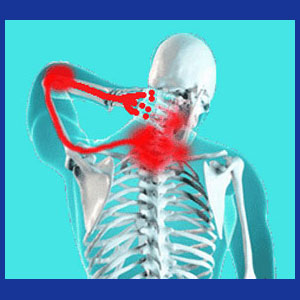
Neck and hand pain is a common symptom set that may be related to a pinched cervical nerve, although other explanations are certainly possible. The cervical spine is the location where all the nerves that serve the hand, including C5, C6, C7, C8 and T1 originate. Spinal pathologies in the neck can certainly affect the functionality of these nerves, causing pain and related neurological symptoms. However, there are also nonstructural reasons why neck pain and hand pain might exist concurrently, as well as the possibility that the 2 conditions are not related at all, but instead result from independent causations.
This dialog focuses on exploring the possible relationship between neck and hand pain. We will examine how the conditions might be related to a common origin, as well as explain how 2 different processes might be responsible for creating symptoms without any relationship between the two pain syndromes.
Neck and Hand Pain from Different Causes
The first logical explanation for neck pain and hand pain consists of 2 independent causations. Neck pain can be caused by a wide range of possible sources, including muscular, neurological and mechanical origins. We detail all the usual possible causes of neck pain throughout this website and advise patients to acquaint themselves with all of these scenarios in order to help themselves identify possible contributors to their own suffering.
Meanwhile, hand pain can be caused locally by many conditions, as well. In some cases, hand pain might also be generated elsewhere in the pathway of innervation outside of the neck, once the nerves have left the spine. The nerves that originate from roots C5 to T1 might suffer injury or impingement by muscular tissues in the shoulder or upper arm, creating symptoms in their destination locations in the hand. Disease and systemic processes can also affect these nerves locally or at any point before they reach the hand.
Arthritis, injury and various soft tissue pathologies can create hand pain that is unrelated to incidental neck symptoms. Osteoarthritis in the hand is virtually normal in adults past middle age. Meanwhile, carpal tunnel syndrome continues to be one of the most commonly diagnosed conditions that is held responsible for wrist and hand pain, as well as limited dexterity and functionality in the hands.
No assumptions should be made that neck pain is directly related to hand pain without proper diagnostic evaluation and processing.
Structural Neck and Hand Pain from Common Causation
Common structural causation for neck and hand pain syndromes will virtually always consist of a pinched nerve in the cervical spinal region. In rare instances, central cervical spinal stenosis might also be to blame for creating both types of pain. Pinched cervical nerve roots are diagnosed far more often than they actually occur. However, pinched nerves do happen and can create pain locally in the neck, as well as in the destination location of the compressed neurological tissue. In this case, the destination innervation pattern is the hand.
Pinched nerves are rarely chronically painful. This is because as a nerve is compressed, it loses its ability to signal at all. Instead of the initial expressions of pain and tingling, the symptomatic pattern typically moves towards objective numbness and subsequent weakness as the nerve fails to deliver messages to the brain.
Cervical pinched nerves might occur due to many reasons, including disc pathologies, arthritic growth, atypical lordotic curvature, spondylolisthesis or cervical scoliosis. It is vital that physician take the time to fully explore the possibility that spinal or foraminal stenosis may be coincidental to the symptoms expressed. Assuming that any degree of moderate or severe stenosis is definitively causative without proper diagnostic evaluation, including symptomatic correlation and nerve conduction testing, is a recipe for disaster. Treatment statistics for pinched nerves support this statement 100%, since so many patients cite poor outcomes from a wide range of therapeutic interventions due to the diagnostic verdict being incorrect.
Nonstructural Neck and Hand Pain
Neck and hand pain might be related by a nonstructural causation or might even come about from 2 independent nonstructural causations. The usual process responsible for these occurrences is regional ischemia. When related in source, the ischemia will usually affect nerve and muscle tissues in the neck, including the nerve roots that innervate the hand. Since oxygen deprivation will elicit powerful symptoms, this is a logical explanation for many cases of seeming pinched nerve pain, even though the nerve is not actually compressed in any way. Similarly, when ischemia strikes, it might target multiple areas of the body independently of each other. In this case, muscular and/or neurological tissues are oxygen deprived in the neck, causing local pain, while neurological and/or muscular tissues are oxygen deprived in the hand, causing pain in the extremity.
Some disease processes can also affect large areas of the anatomy including the neck and hand. However, proper basic diagnostic processing should eliminate neuromuscular diseases from the list of potential causes in virtually all patient profiles.
Neck Pain > Combination Neck Pain > Neck and Hand Pain





